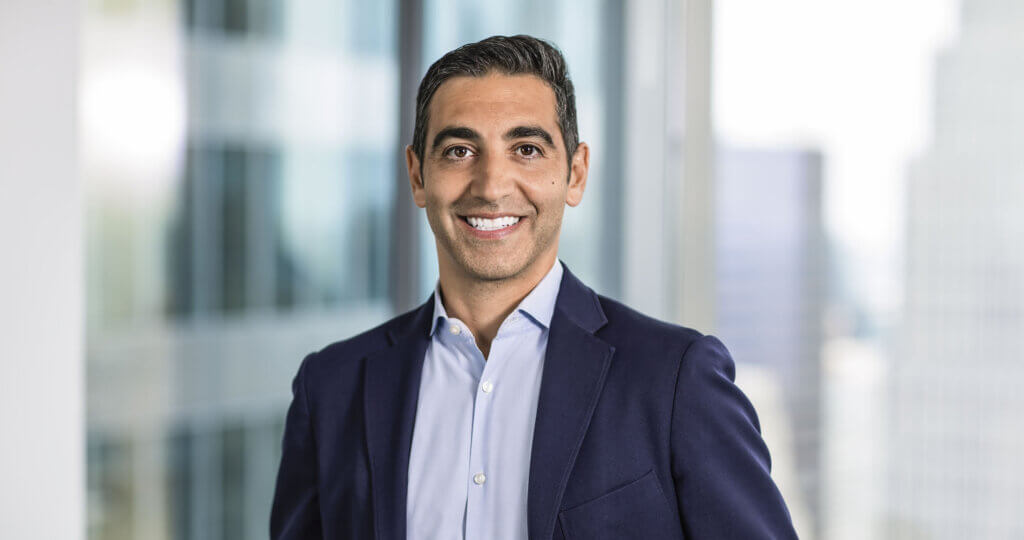Oakmark Equity and Income Fund – Investor Class
Average Annual Total Returns 12/31/20
Since Inception 11/01/95 9.84%
10-year 7.70%
5-year 8.59%
1-year 8.68%
3-month 16.07%
Gross Expense Ratio: 0.86%
Net Expense Ratio: 0.84%
Expense ratios are based on estimated amounts for the current fiscal year; actual expenses may vary.
The net expense ratio reflects a contractual advisory fee waiver agreement through January 27, 2022.
Past performance is no guarantee of future results. The performance data quoted represents past performance. Current performance may be lower or higher than the performance data quoted. The investment return and principal value vary so that an investor’s shares when redeemed may be worth more or less than the original cost. To obtain the most recent month-end performance data, view it here.
The Oakmark Equity and Income Fund celebrated its 25th anniversary at the beginning of November. Over its history, the Fund has managed to slightly outpace the S&P 500, despite typically having a weighting of 60% equity and 40% fixed income securities. This balanced approach also helps reduce volatility as the Fund has only had four down years in its history. As noted in the anniversary retrospective those returns were generated during adverse market conditions, including the implosion of the technology bubble, the great financial crisis, a poor decade for value stocks and the Covid-19 sell-off. Fortunately, the Covid-19 sell-off has been short lived and the market is up strongly for 2020. In fact, the rebound has been so dramatic that some now wonder if the market is in a bubble.
Although no two markets are ever the same, recent events have reminded some observers of the technology bubble that led up to the 2000 crash. This year, 19 IPOs doubled on their first day of trading—triple the amount of any year since 2000 when 79 IPOs tripled on their first day of trading. Special-purpose acquisition companies (SPACs), which raise money for companies to invest at a later date, have raised over $80 billion in 2020, more than they raised over the entire previous decade. A novice Robinhood trader made nearly 13,000 trades in a six-month period this year1. Yet the number of stocks outperforming the S&P 500 is at its lowest point since 2000, according to the Leuthold Group. Small trader call buying has more than tripled over the past year and is now even higher than its previous peak in 2000. The Russell 1000 Growth Index is up 38.5% this year versus 2.8% for the Russell 1000 Value Index. The S&P 500 CAPE ratio, which is the cyclicality adjusted P/E based on 10 years of earnings, has reached its highest point ever, aside from the 2000 technology bubble.
After increasing over 700% prior to its inclusion in the S&P 500, Tesla was the largest company ever added and is the sixth-largest company currently in the index. In terms of revenue and earnings, however, Tesla ranks 73rd and 87th, respectively, within the S&P 500. Excluding the Chinese OEMs, Tesla’s fully diluted market cap is bigger than the 10 largest OEMs combined. It is estimated that the addition of Tesla alone will increase the S&P 500 P/E from 22.0x to 22.4x. The value of in-the-money stock compensation is estimated at around $135 billion, which would be the 53rd-largest company in the S&P 500.
These stats and stories are not meant to suggest we are in a bubble, but they highlight the striking similarities between today and 2000. One simple explanation for much of the market movement can be explained by extremely low interest rates. Growth stocks have a much higher percentage of their expected future cash flows weighted well into the future, which means that a decline in rates has an outsized effect on their net present value. As we have commented before, whether many growth stocks can grow at the forecasted rate or if the distant cash flows should be discounted at today’s very low interest rates is debatable. It is also worth noting that many of today’s large technology stocks, several of which are currently owned by various Oakmark funds, are dramatically more profitable, well entrenched and trading at much lower multiples in 2020 than similar companies did in 2000.
If we are heading toward a moment like the period following the bursting of the technology bubble, this is not necessarily a bad thing for the Equity and Income Fund. In fact, despite the S&P 500 declining each year from 2000-2002, the Fund enjoyed one of its strongest periods of absolute and relative performance then. That is because our portfolio was—and is—quite different than the index. The Fund currently holds 42 stocks. These stocks range in capitalization size from small to large and they trade at what we believe are significant discounts to the market. While Covid-19 has impacted the short-term fundamentals of some of our holdings, we do not believe it will permanently impact any of them and we expect that most of our holdings’ business fundamentals will improve markedly as vaccines are rolled out in 2021. Our analytical team has extensively researched these companies and believes they trade at significant discounts to their intrinsic values.
Given how long growth has outperformed value, it is easy to forget that, historically, leadership oscillates between the two styles. The dramatic outperformance of growth stocks this year has only helped to cement investors’ preference for higher growth stocks. While this trend has pressured our near-term performance, we do not believe it is permanent and we expect that this setup will only help to exacerbate the rotation whenever it does occur. In 2000, many respected value managers left or were forced out of the industry as their returns were so far behind the S&P 500, it appeared hopeless that they would ever catch up. Just a few years later, many of the remaining value managers were handily beating the index. We are patient investors, and time has taught us that if we do our analysis well, a meaningful percentage of our investments can close their valuation gaps and reward our shareholders with attractive returns.
Quarter Review and Transaction Activity
The Oakmark Equity and Income Fund increased 16.1% in the fourth quarter, compared to a 9.6% increase for the Lipper Balanced Fund Index. For the year, the Fund is up 8.7%, compared to a 13.6% gain for the Lipper Index. Longer term performance remains strong as the Fund is up 9.8% annually since inception versus 7.3% for the Lipper Index. The Fund’s short-term performance continues to be hampered by its overweight in sectors, such as financials and other economically sensitive stocks, as well as by its underweight in technology stocks. Many of the sectors and stocks the Fund is overweight are traditionally associated with value investing, a style that has underperformed dramatically over the past five years.
The Fund ended the quarter with a weighting of 71% equities and 29% fixed income/cash. The equity weighting is higher than usual. This is because we added two new names and decided not to trim some of our largest positions, despite the strong quarter of performance. These decisions reflect our belief that, despite the strong quarter, many of our largest positions still trade at meaningful discounts to their intrinsic values. On the fixed income allocation, we continue to favor corporate bonds over Treasurys as we believe that corporate spreads are still relatively attractive. We did reduce the allocation to corporates some during the quarter as spreads continued to tighten from their spring peak.
The largest contributors to the portfolio’s return in the quarter were General Motors, Bank of America, Alphabet, Howmet Aerospace and TE Connectivity. The biggest detractors were Regeneron Pharmaceuticals, Nestlé, Thor Industries, General Dynamics and Borg Warner. Only Regeneron was down over 10% for the quarter. For the year, the largest contributors were Alphabet, TE Connectivity, Charter Communications, General Motors and Agilent Technologies, and the largest detractors were Citigroup, Bank of America, EOG Resources, MGM Resorts International and Howard Hughes. We initiated two new equity positions in the quarter, Keurig Dr Pepper and General Dynamics, and eliminated one, Foot Locker. Foot Locker was a long-time holding that performed well on an absolute basis. While we still believe it is undervalued, we believe that the two new holdings are more attractive.
Keurig Dr Pepper is one of North America’s leading beverage companies and commands dominant positions in single-serve coffee and flavored sodas. We believe single-serve coffee pods will capture almost all of the incremental growth in at-home coffee consumption because consumers increasingly prefer K-Cups over drip brewing due to their greater convenience, quality, variety and value. Keurig’s competitive advantages (low-cost production, the largest installed base of brewers, exclusive brand partnerships) make it the leading player in a growing market and the disproportionate beneficiary for pods in North America. The company’s soda franchises remain highly profitable, and we do not expect health-related concerns about sugar to materially impact consumption trends. We believe that Keurig’s brands should deliver steady growth, consistent market share gains and significant excess cash. We think the company is an above-average business trading at a meaningful discount to the broader market, its beverage peers and historical private market transactions.
General Dynamics is one of the leading defense contractors in the U.S. and owns the world’s premier business jet franchise, Gulfstream. We were able to purchase this high-quality, durable franchise at a meaningful discount to our estimate of intrinsic value as investors worried about a series of near-term concerns. Taking a longer view, the company’s business jet franchise should benefit from a multi-year investment program in new, differentiated product. Also, free cash flow conversion is set to improve materially, and the company is poised to benefit from a highly visible ramp up in revenue related to next generation nuclear-powered submarines. As these positives come into clearer view, we expect sentiment to improve and the share price to subsequently increase.
We would like to thank our fellow shareholders for their investment in the Fund and welcome any questions or comments.
1Idzelis, Christine. (2020, December 16). Robinhood allegedly lures inexperienced investors, fails to properly screen for options trading, Massachusetts complaint says. Institutional Investor. https://www.institutionalinvestor.com/article/b1pq037y4pd6yr/Robinhood-Allegedly-Lures-Inexperienced-Investors-Fails-to-Properly-Screen-for-Options-Trading-Massachusetts-Complaint-Says
The securities mentioned above comprise the following percentages of the Oakmark Equity and Income Fund’s total net assets as of 12/31/20: Agilent Technologies 1.5%, Alphabet Cl A 5.0%, Bank of America 5.4%, BorgWarner 2.7%, Charter Communications Cl A 2.7%, Citigroup 2.3%, Connectivity 0%, EOG Resources 0%, Foot Locker 0%, General Dynamics 1.0%, General Motors 4.8%, Howard Hughes 0.6%, Howmet Aerospace 2.5%, Keurig Dr Pepper 1.1%, MGM Resorts International 0%, Nestlé ADR 1.9%, Regeneron Pharmaceuticals 0.8%, TE Connectivity 4.4%, Tesla 0% and Thor Industries 1.0%. Portfolio holdings are subject to change without notice and are not intended as recommendations of individual stocks.
The Lipper Balanced Fund Index measures the equal-weighted performance of the 30 largest U.S. balanced funds as defined by Lipper. This index is unmanaged and investors cannot invest directly in this index.
The Russell 1000® Value Index measures the performance of the large-cap value segment of the U.S. equity universe. It includes those Russell 1000® companies with lower price-to-book ratios and lower expected growth values. This index is unmanaged and investors cannot invest directly in this index.
The Russell 1000® Growth Index measures the performance of the large-cap growth segment of the U.S. equity universe. It includes those Russell 1000® companies with higher price-to-book ratios and higher forecasted growth values. This index is unmanaged and investors cannot invest directly in this index.
The S&P 500 Total Return Index is a float-adjusted, capitalization-weighted index of 500 U.S. large-capitalization stocks representing all major industries. It is a widely recognized index of broad, U.S. equity market performance. Returns reflect the reinvestment of dividends. This index is unmanaged and investors cannot invest directly in this index.
The S&P 500 Shiller CAPE Ratio, also known as the Cyclically Adjusted Price-Earnings ratio, is defined as the ratio the S&P 500’s current price divided by the 10-year moving average of inflation-adjusted earnings.
The Fund invests in medium- and lower-quality debt securities that have higher yield potential but present greater investment and credit risk than higher-quality securities, which may result in greater share price volatility. An economic downturn could severely disrupt the market in medium or lower grade debt securities and adversely affect the value of outstanding bonds and the ability of the issuers to repay principal and interest.
The Oakmark Equity and Income Fund’s portfolio tends to be invested in a relatively small number of stocks. As a result, the appreciation or depreciation of any one security held by the Fund will have a greater impact on the Fund’s net asset value than it would if the Fund invested in a larger number of securities. Although that strategy has the potential to generate attractive returns over time, it also increases the Fund’s volatility.
The information, data, analyses, and opinions presented herein (including current investment themes, the portfolio managers’ research and investment process, and portfolio characteristics) are for informational purposes only and represent the investments and views of the portfolio managers and Harris Associates L.P. as of the date written and are subject to change and may change based on market and other conditions and without notice. This content is not a recommendation of or an offer to buy or sell a security and is not warranted to be correct, complete or accurate.
Certain comments herein are based on current expectations and are considered “forward-looking statements”. These forward looking statements reflect assumptions and analyses made by the portfolio managers and Harris Associates L.P. based on their experience and perception of historical trends, current conditions, expected future developments, and other factors they believe are relevant. Actual future results are subject to a number of investment and other risks and may prove to be different from expectations. Readers are cautioned not to place undue reliance on the forward-looking statements.
All information provided is as of 12/31/2020 unless otherwise specified.








